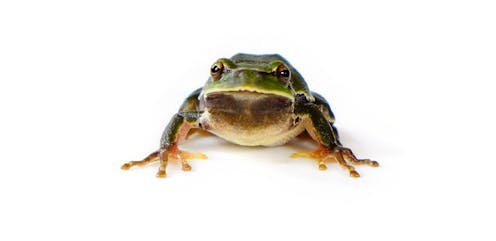
Almost 40 years ago, reactor number four exploded at the Chernobyl nuclear power plant. Since then, the surrounding area has become, to the surprise of many, one of Europe’s largest nature reserves. Over the last eight years, we have been working to find out how this infamous environmental disaster has affected the area’s fauna.
Radiation can damage cells and, with high exposure, can kill organisms. However, Chernobyl’s situation has changed a lot since the accident – today, only 10 % of the radiation released in 1986 remains, and the most dangerous isotopes, such as iodine, disappeared many years ago.
This explains the vast abundance and diversity of animals living in Chernobyl today. However, we have to look closely to find out if the animals have been harmed in ways that are not visible to the naked eye, which could reduce their life expectancy.
Leer más: The mystery of Chernobyl's wild horses
Chernobyl’s frogs
Since 2016, we have studied populations of Eastern tree frogs (Hyla orientalis) in Chernobyl. Visiting the area for several weeks each spring, we take advantage of the breeding season to capture males at night and take them to our laboratory.
As well working in the Chernobyl exclusion zone, we also visit other areas of northern Ukraine that are not contaminated by radiation. These places act as a control group to compare our results with those from the affected areas.
For years, we have studied various aspects of these frogs – their morphology, physiological wellbeing, their immune systems, and so on. Our research has found that Chernobyl’s frogs appear to be in good health. We have also discovered a case of rapid evolution among the frogs, which are darker than those found in non-radioactive areas. This is likely due to melanin’s role in protecting against radiation.
However, what we had not previously researched was the long-term effects of radiation on these creatures. For this reason, we analysed the relationship between radiation, age and ageing in Chernobyl’s frogs.
Leer más: Chernobyl black frogs reveal evolution in action
How long do frogs live?
We can calculate a frog’s age by counting the growth lines in its bones – much like a tree, each year of a frog’s life is marked. We know that some species in mountainous areas can live for over 20 years, while others live to only 2.
For our work in Chernobyl, we examined around 200 specimens over 3 years. The oldest Eastern tree frog that we found had reached nine years of age. The majority were around three or four.
Additionally, we wanted to know if radiation affected the rate at which these frogs age. To do this, we measured the length of their telomeres, which are DNA sequences found at the end of chromosomes. Because their function is to protect the genetic material, they become shorter with each cell division, making them an indicator of how fast the frogs are ageing.
To complete our study, we also examined the levels of stress hormones in the frogs. We measured their blood for levels of corticosterone, a hormone that regulates metabolism and stress responses.
In all the frogs we researched, we also calculated the levels of radiation absorbed by each individual. To do this, we measured the levels of caesium in their muscles and strontium in their bones, allowing us to precisely correlate our other data with levels of radiation exposure in the frogs we have studied. This is one of the most detailed studies on current levels of radiation exposure among animals in Chernobyl.
How are Chernobyl’s frogs ageing?
Our work has revealed that living in Chernobyl does not affect either age or ageing rates among the frogs that we studied.
The median age of the specimens we captured was 3.6 years, and this was similar across individuals with a higher level of radiation exposure and those from non-radioactive areas. These figures are normal for the species, and similar to other populations living far from Chernobyl.
We also did not observe any effects of radiation on the frogs’ ageing rate – we found no relation between the amounts of radiation absorbed and the lengths of their telomeres. This was relatively constant across all levels of radiation exposure that we studied.
Additionally, corticosterone levels were not affected by the amount of radiation absorbed – Chernobyl’s frogs do not seem to be stressed.
These results suggest that current radiation levels in Chernobyl are not high enough to cause chronic harm to these creatures. Studies like ours are fundamental to debunking the myth that the exclusion zone is hostile to life, clearly showing that the area has become a hugely important refuge for threatened wildlife in Europe.
Germán Orizaola receives funding from the Spanish Nuclear Safety Council (SUBV/29-2021) and the British Ecological Society (SR20-1169).
Pablo Burraco receives funding from the Spanish Ministry of Science, Innovation and Universities (IJC2020-044682-I).
This article was originally published on The Conversation. Read the original article.







